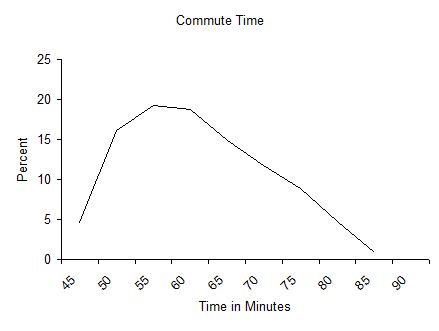Firstly, I will answer your question technically, and then I will discuss the project management considerations and implications.
Estimates and accuracy - statistical background
The time that a project will take to deliver is, prior to project closure, a statistical distribution, due to project risks.
You can derive various numbers or estimates from that distribution. For example, you can compute the statistical expectation ('mean' or 'average' time) of the distribution.
The accuracy of an estimate hatt is measured by a metric such as the error t-hatt, where t is the actual time that the project took, a value which is only known at project completion.
You cannot guarantee an accurate estimate prior to project closure. What you can do is minimise the statistical expectation of the error. If you know the distribution, the statistical expectation of the time, E(t) gives you what is called an unbiased estimator, because E(E(t) - t) = E(E(t)) - E(t) = 0 (i.e. the average error is zero). All other estimators will be biased - they will have an expected error that is non-zero - but they might have other desirable properties.
Project Management Implications
Time and cost estimates are useful in project management for several reasons, but it is important that they are not misused. For many of these applications, an unbiased estimator is not the most suitable.
Some key uses of time and cost estimates on projects:
- Helping the executive and programme or corporate management decide whether or not there is a continuing business justification for a project. For example, a project that costs too much or takes too long might not be worth it.
- Marshalling resources that need to be planned in advance correctly. For example, specialist team members or equipment might be required after certain tasks are completed, and need to be booked in advance. If they are booked for too early, the booking will need to be cancelled or they will sit around doing nothing. If they are booked for too late, the project will take longer than necessary. This also includes planning activities such as launch parties or media events, which cannot always be changed.
- Ordering tasks optimally, based on estimates of their cost and duration.
For different applications, different estimators are appropriate; there is not one estimate to rule them all.
When conveying project time and costs to stakeholders, simply conveying an unbiased estimate is not enough; instead, it is far better to ensure that the risks are accurately conveyed (for example, through a Risk Register and a Risk Management Strategy) and approved, so that the relevant stakeholders are aware of the distribution that the project might take in terms of time and cost.
In terms of approvals, ideally a project manager should seek to be given tolerances for project variables such as risk, cost, time, and scope. The project manager should seek to optimise the project, but have the approval to go up to the tolerances in new forecasts without needing to seek further approval. This is far better than working to a single estimate or having a contingency without defining how it can be used.
By explicitly taking into account risk, the risk appetite of the organisation can be taken into account. For example, suppose that the project would fail at its objectives and make a loss if your commute takes more than 70 minutes. There is then a significant chance that the project will fail. For some organisations, the expected benefits might outweigh the risk of failure, but for others, it won't. Simply using an unbiased estimate would not get this.
In terms of marshalling resources, a specific date often has to be nailed down in advance. For example, the room for the launch party might have to be booked. If the date is missed, the room will have to be rebooked, increasing costs. In this case, an estimate is needed. One option is to avoid the risk by being flexible on other variables (e.g. include some could have features, but give the project manager tolerance to cut them if needed to make a deadline). If there is no option but to be firm on the date, the best approach will depend on the organisation's risk appetite and the additional costs if the risk of missing the deadline eventuates. A conservative estimate is one way to reduce the risk (i.e. an unbiased estimator stacked towards the estimate exceeding the actual time), but it might reduce the organisational benefits captured (by allowing competitors more time to get in before the launch party).
The trade-off between risk and benefits is an important business consideration, and there are statistical techniques that can help, such as picking the date that minimises the 'expected loss', or picking a date such that with some high probability (95% or 99%), the actual loss will be less than a certain amount.
